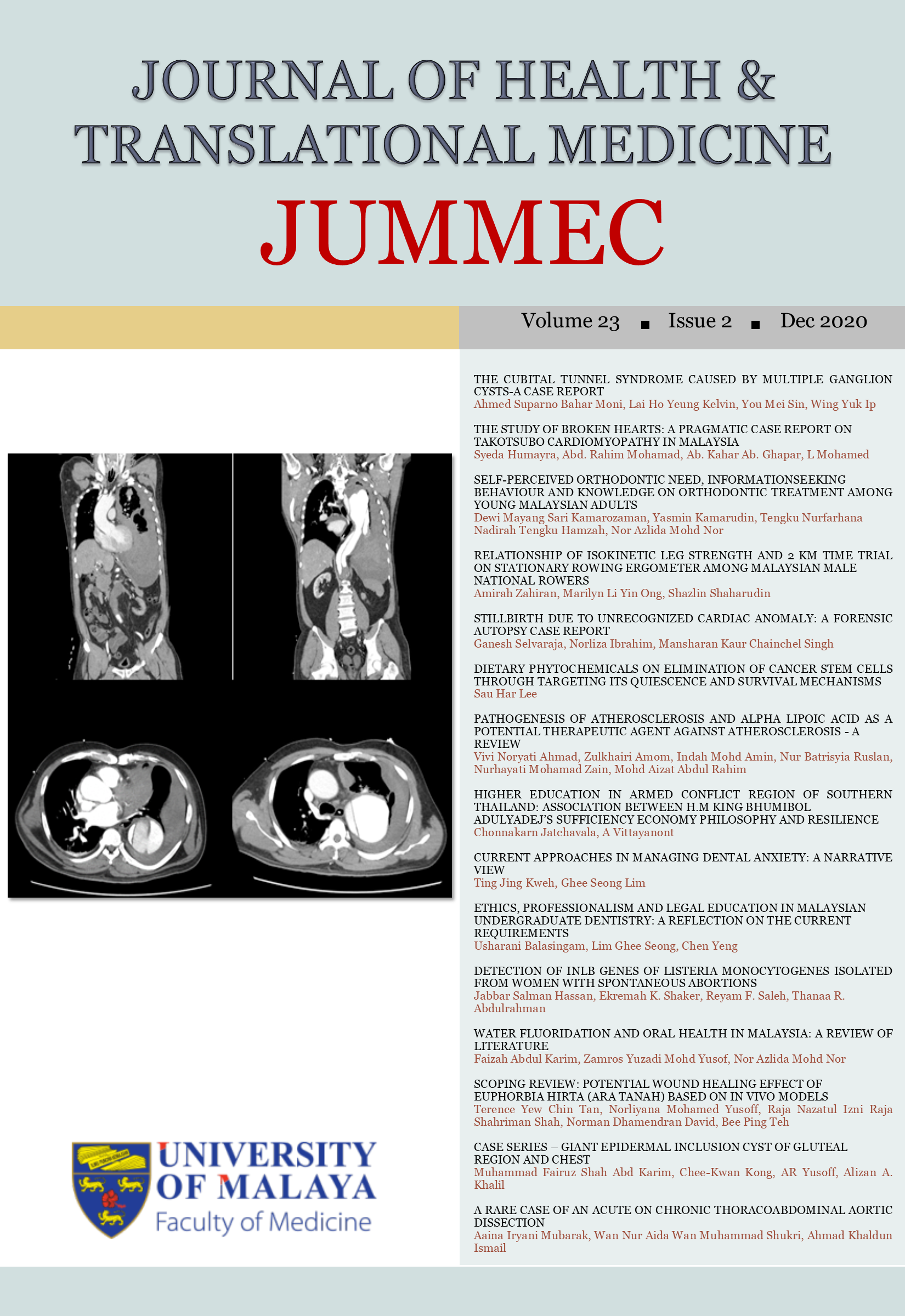SELF-PERCEIVED ORTHODONTIC NEED, INFORMATIONSEEKING BEHAVIOUR AND KNOWLEDGE ON ORTHODONTIC TREATMENT AMONG YOUNG MALAYSIAN ADULTS
Received 2019-11-22; Accepted 2020-02-21; Published 2020-07-01
DOI:
https://doi.org/10.22452/jummec.vol23no2.3Keywords:
Aesthetic Component, Index of Orthodontic Treatment Need (IOTN), Information-seeking Behaviour, Young AdultsAbstract
Objective: This study aimed to assess self-perceived aesthetics and orthodontic need, information-seeking behaviours and knowledge on orthodontic treatment among young adults in Malaysia.
Methods: A cross-sectional study was conducted among 933 polytechnic students in Malaysia using a selfadministered questionnaire. The Aesthetic Component (AC) of the Index of Orthodontic Treatment Need (IOTN) was used to assess self-perceived orthodontic need. Respondents were also asked about their intention to seek orthodontic treatment. Those showing intention were further asked about their reason(s) for seeking treatment, their information-seeking behaviours, and knowledge on orthodontic treatment. Data was analysed using SPSS.
Results: The overall response rate was 93.2% with the mean age of 20.43 (SD±1.07). Although most of the respondents rated themselves under the no treatment need category of the AC-IOTN scale, 61.9% reported intention to seek orthodontic treatment. The main reason for seeking treatment was to improve dental function (45.3%) and aesthetics (40.1%). Most claimed to look for information prior to orthodontic treatment, either using online or offline platforms. Many relied on friends (83.3%) as a source of information and more than half used online sources including social media and websites. A minority demonstrated lack of knowledge in terms of appropriate places to receive treatment (2.2%) and qualification of orthodontic practitioners (37.7%).
Conclusions: The majority of young Malaysian adults have high intention to seek orthodontic treatment regardless of their perceived need. A minority had lack of knowledge about qualified orthodontic providers and places to receive treatment. Majority reported positive attitudes towards information-seeking behaviour prior to seeking orthodontic treatment.
Downloads
Downloads
Published
Issue
Section
License
All authors agree that the article, if editorially accepted for publication, shall be licensed under the Creative Commons Attribution License 4.0 to allow others to freely access, copy and use research provided the author is correctly attributed, unless otherwise stated. All articles are available online without charge or other barriers to access. However, anyone wishing to reproduce large quantities of an article (250+) should inform the publisher. Any opinion expressed in the articles are those of the authors and do not reflect that of the University of Malaya, 50603 Kuala Lumpur, Malaysia.


